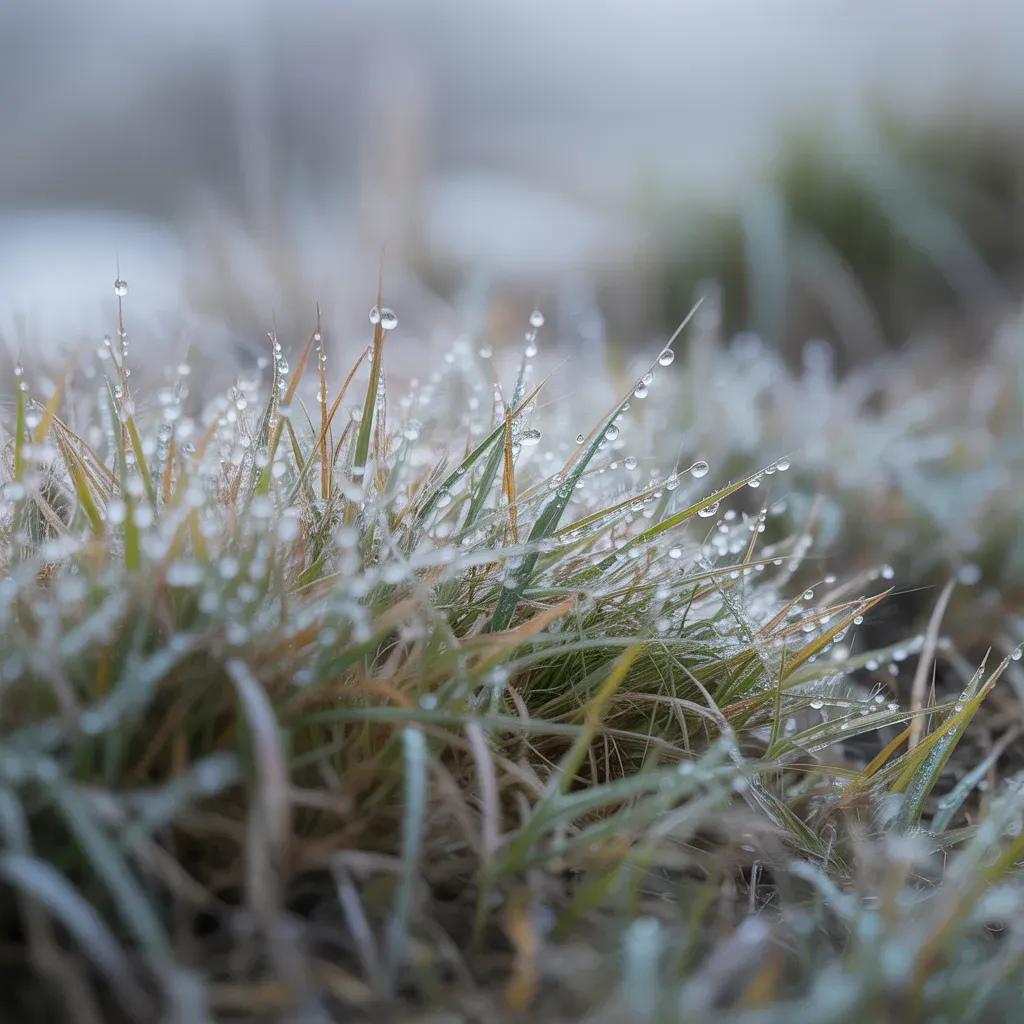Unveiling the Endocrine System – the body's vitality maestro 🌟
When you hear the word ‘endocrine’, what do you think of?
You might vaguely remember hearing the term in science lessons way back when, but if not it could be as mysterious as a planet in a recently discovered solar system. But … the endocrine system is actually one of the most complex and important systems in the entire body, housing some of the most important chemicals that the body needs for optimal health and vitality.
Think of it as the backstage crew of the body, working tirelessly to keep everything running smoothly. But don't let the scientific jargon scare you off – we’re going to break it down into bite-sized pieces, and cover the common sources that disrupt this vital system and the simple ways that we can avoid - or at least minimise - coming into contact with them.
The Endocrine System’s Impact
Imagine your horse’s inner engine is a bustling city, and the endocrine system is the network of posties and couriers delivering everything you need to ensure everything runs smoothly. These messengers, or hormones, come from a network of glands located throughout the body, each with its own special role. From regulating metabolism to managing stress, they're the unsung heroes of the body’s health.
You’ll no doubt recognise some of the glands names - the hypothalamus, pituitary gland, thyroid gland, parathyroid glands, adrenal glands, pineal body, the reproductive organs (ovaries and testes), and the pancreas, which has both hormone production and digestion duties.
Each gland produces different hormones that have different roles, i.e. regulating metabolism, growth, reproduction, sweating, stress response, and so much more. The pancreas, for example, secretes insulin and glucagon into the bloodstream to regulate blood sugar, and the thyroid produces hormones for regulating metabolism. The pituitary gland regulates physiological processes such as growth, but for those of us familiar with Cushing’s/PPID, we’ll know the pituitary gland more for producing the adrenocorticotropic hormone (ACTH).
The reproductive cycle is also influenced by pituitary hormones. follicle-stimulating hormone (FSH) and luteinizing hormone (LH) act on the ovaries in mares and the testes in stallions. In mares, FSH stimulates the development and maturation of the follicle leading up to ovulation. In males, FSH aids in sperm maturation. LH plays a major role in the production of sex hormones such as testosterone and oestrogen in both sexes.
Now let's meet the stars of the show
- The Pituitary Gland
Nestled near the brain's center, it's like the boss, overseeing everything from metabolism to reproduction. The pituitary’s hormones have a variety of functions from metabolism to reproduction, but probably the most well-known function of the equine pituitary is the production of adrenocorticotropic hormone (ACTH) by the pars intermedia, which acts directly on the adrenal glands to stimulate the production of steroids, most notably cortisol in response to stress. It's dysfunction of the pars intermedia that triggers Cushing’s/PPID.
More importantly, the overproduction of ACTH has a direct effect on the immune system, which is why our Cushing’s horses show signs of poor immunity such as chronic dermatitis, abscesses, and poor wound healing.
Then there’s the antidiuretic hormone (ADH) - it's like the unsung hero of the body's fluid balance system. ADH is produced by the hypothalamus, then stored and released by the posterior section of the pituitary gland. But that's not where its journey ends – ADH plays a crucial role in the kidneys too.
The kidneys aren't just filters; they're also secret endocrine agents, quietly regulating blood pressure behind the scenes. If they detect a case of hypotension (low blood pressure), ADH springs into action to signal the kidneys to hold onto sodium like it's the last drop of water in the desert, thereby retaining water and boosting blood pressure.
You can dive deeper into the intricate world of renal function on our Kidneys page.
The reproductive cycle is also influenced by pituitary hormones, with follicle-stimulating hormone (FSH) and luteinizing hormone (LH) being the key players. In mares, FSH kickstarts the growth and maturation of follicles, paving the way for ovulation. Meanwhile, in stallions, FSH lends a hand in sperm development. As for LH, it's a crucial driver in the production of sex hormones like testosterone and estrogen, essential for reproductive functions of both sexes.
- Then there are the
adrenal glands that sit above each kidney. They may be relatively small in size, but they play an almighty role in metabolism, behaviour, and – probably what we deal with the most when it comes to the adrenals -
stress.
The adrenal glands also produce the catecholemines - epinephrine and norepinephrine – most of us know these well as these hormones are responsible for the fight/flight response when our horses sense a perceived threat.
- The
thyroid gland holds a significant presence. While it's more prominent and active during the growth phase of foals, it’s often difficult to palpate in adult horses.. This gland concentrates the iodine in the body and produces
thyroxine (T4) and the more potent
triiodothyronine (T3) in response to signals from the pituitary gland.
In young horses, thyroid hormones play a pivotal role in fueling growth, nurturing organ development, and regulating metabolism. But irrespective of age, thyroid hormones continue to play a role in protein synthesis, modulate body temperature to combat prolonged cold spells, and set the basal metabolic rate, ensuring vital functions like breathing and maintaining warmth hum along smoothly.
Additionally, the thyroid gland keeps tabs on calcium levels in the body through its regulation of calcitonin, ensuring a delicate balance between bone health and circulation.
Top tip - in older horses you might notice what seems like a small egg-shaped lump intermittently protruding from behind the larynx, just above the trachea. No need to panic though - this is often just the thyroid gland making a cameo appearance as collagen in connective tissue weakens with age.
- The parathyroid glands are closely linked to the thyroid gland and found in discreet clusters in other regions. These glands house specialised cells that produce parathyroid hormone (PTH), a key player in calcium regulation throughout the body by orchestrating several processes. It can stimulate osteoclasts to reabsorb bone, releasing calcium into the bloodstream. Additionally, PTH has a hand in kidney function, retaining calcium while releasing phosphorus through urine.
- Now we get to the
pancreas, which lies within the abdominal cavity adjacent to the duodenum (the first segment of the small intestines). As an endocrine organ, it's tasked with the production of two crucial hormones: insulin and glucagon. Insulin holds the key to ferrying glucose into cells for energy utilisation, thus holding the mantle of primary blood sugar regulator.
Quick side note - while we all know that insulin resistance (IR) is a major player for our EMS horses, rest assured that it’s not due to pancreatic dysfunction. It’s due to the cell receptors failing to respond to the circulating insulin and not because the pancreas isn’t producing insulin. But we knew that, didn’t we 😉
Glucagon also steps up to the plate when blood sugar takes a nosedive, drawing glucose out of storage to balance the scales. But that's not all the pancreas has up its sleeve. It moonlights as a digestive maestro, secreting digestive enzymes into the small intestine, primed and ready to tackle food breakdown.
- Turning our attention to the
sex glands – the ovaries in mares and testes in stallions - these glands double up as endocrine powerhouses, producing the essential sex hormones such as testosterone, estrogen, and progesterone.
These hormones don't just play a role in the reproductive cycle of mares and sperm development in stallions; they also contribute to the feminisation or masculinisation in the development of foals, as they develop and drive sexual behaviour.
However, it's not all smooth sailing. Occasionally, ovarian or testicular tumours can throw a spanner into the works, leading to an overflow of reproductive hormones. This hormonal imbalance can manifest as behavioural changes in mares and potentially affect the quality of semen in stallions.
Now to Endocrine Disruptors
So what triggers the hormones to be released? Simple – a stimulus, literally, which triggers a response in the brain. Depending on whether the endocrine system is functioning happily in sync with the body will determine the levels of hormone production and whether it will deliver a positive or negative experience. Which leads us nicely to the unfriendlies which can upset the balance completely.
Now to the bad guys – endocrine disruptors, or EDCs; chemicals that throw a spanner in the works of our endocrine system.
EDCs are found pretty much everywhere, lurking in our environment, food, and even health products. They infiltrate our bodies through various avenues - inhalation, ingestion, and skin contact, so they can be difficult to avoid.
How do they wreak havoc? By meddling with hormone production in three primary ways:
• Blocking pathways between natural hormones and their receptors.
• Triggering abnormal hormone production - either excessive or insufficient.
• Mimicking natural hormones, throwing the body's responses out of whack.
EDCs have led to negative effects on our domestic animals as well as wildlife, a fact that is well-documented. Pesticides and herbicides often contain endocrine-disruptor chemicals that then leach into the soil, water, and air, causing harm to animals.
The most famous example is DDT, an insecticide that causes several bird-of-prey species to lay eggs with extremely thin shells. This led to a dramatic decrease in their population when DDT was heavily used in the agriculture industry.
As I type, there’s a growing body of scientific research pointing to a link between endocrine disruptors and adverse health outcomes, albeit on human health only at this time, but all can translate directly to our horses:
• A reduced ability to handle stress.
• Obesity and type 2 diabetes.
• Decreased sexual health, including decreases in sperm count.
• Negative neurological and behavioural changes.
• Endometriosis.
• Cardiovascular issues.
The bottom line is the more we’re learning about EDCs, the more we’re realising just how destructive they can be for all of us, whether human, our horses or wildlife.
Common Endocrine Disruptors and How to Avoid Them
Similarly, endocrine disruptors are all over the place - it’s impossible to eliminate all contact with them, but thankfully, there are plenty of ways to reduce contact. For a comprehensive inventory , have a look at the Environmental Working Group’s list of Dirty Dozen Endocrine Disruptors. Again, this research is based on human studies but many areas can be correlated with equine health as well, as indicated below by an asterisk *.
- Bisphenol A (BPA)* - lurks in canned foods, bottles and packaging, posing risks of obesity, heart disease, and premature puberty. Opting for BPA-free alternatives and steering clear of plastics marked with a #7 recycling label can help mitigate the risk. And don't forget about horse care products - checking labels for BPA is equally important.
- Dioxins - by-products of industrial activities, contaminate meat and dairy products, posing threats to reproductive health. Choosing organic options can help minimize exposure.
- Phthalates* - found in plastic, so again, as for Bisphenol A, for our horses be mindful of horse shin/shampoo products. Some children’s toys also contain phthalates, so best to be careful if your children are young and teething. Many skin/beauty products also carry phthalates, so avoid products that contain ‘fragrance’.
- Atrazine* - a herbicide used on corn crops. Atrazine has been shown to turn male frogs into female frogs and has been linked to prostate inflammation in animals. Atrazine is regularly used in agriculture, so checking feedbag ingredients can help limit your horse's exposure to this harmful chemical.
- Mercury - found in seafood, poses risks to the endocrine system and fetal brain development. Opting for wild or sustainably-raised fish can reduce the risk.
- Organophosphate* - pesticides. These chemicals were developed to target the nervous systems of insects, so no surprise that studies have shown them to be linked to brain-development defects in humans. Opting for organic produce and feeds can minimize exposure for both humans and horses.
In other words, organic is always going to be best, but if you can’t then feed whole/minimally processed foods, and avoid plastic bottles/pots/tubs whenever possible.
To conclude
Safeguarding our horses' (and our own) health requires a proactive approach to minimise exposure to endocrine disruptors. By making simple yet impactful changes in our daily habits and choices, we can significantly reduce the risk of adverse health effects associated with these harmful chemicals.
Whether it's opting for organic foods and products, avoiding plastics with known endocrine-disrupting chemicals, choosing sustainable alternatives, or carrying out a regular detox, every action counts to minimise exposure to endocrine disruptors.
The takeaway? The endocrine system is like a finely tuned orchestra, with hormones keeping time from the musical score. Look after it and it'll keep the body singing in tune for years to come 😉










